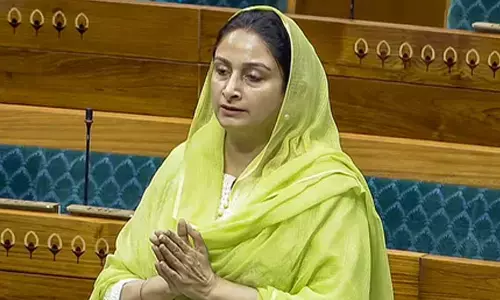Education facilitates economic and social parity for girls

On National Girl Child Day (24th January), we spoke to Rajesh Bhatia, the managing director of Tree House Education & Accessories Ltd, he highlights how education can help girls achieve agency
From the late 19th and early 20th century, when educators Savitribai Phule and Fatima Sheikh championed schooling for girls, India has strived to make education gender inclusive. The Right of Children to Free and Compulsory Education Act in 2009, was a huge step forward but we need to continue working to ensure that all children can access quality education regardless of the demographic they come from.
The ASER (Annual Status of Education Report) 2023 ‘Beyond Basics’ has highlighted gender imbalances in school enrolment and sought interventions to bridge these gaps. It is hence important to address the challenges that girl children face not just on occasions like National Girl Child Day but consistently. In rural areas and across economically challenged demographics especially, girls come up against multiple hurdles including gender biases and early marriage.
According to a new study published in the Lancet Global Health on December 15, 2023, one in five girls is still married off below the legal age of marriage in India, obstructing access to personal agency, higher education and employment opportunities. What precipitates dropout rates is also lack of transport accessibility, inadequate infrastructure, and low income. In many parts of the country, the educational prospects of girls are inhibited by far-flung schools, commuting challenges, travel expenses, paucity of study materials and concerns about safety in the absence of toilets.
Scholarships, mid-day meals, trained teachers, well-equipped classrooms and proper sanitation facilities can encourage enrolment. Often when girls hit puberty, they are pulled out of schools in rural areas and the availability of free hygiene products can also go a long way in augmenting retention.
For years now, experts have mooted a synergistic approach between stakeholders as well as public and private partnerships along with targeted budget allocations to solve these issues. Dropout rates have decreased over time, though there is much more to be done to ensure that every girl child gets to go to school and is not forced into early marriage.
It is equally important to initiate grassroots campaigns to bring about attitudinal change in communities where girls are denied education due to cultural and social norms, domestic responsibilities or early marriage.
India's National Education Policy(NEP 2020) includes the establishment of a Gender Inclusion Fund (GIF) dedicated to supporting girls. This initiative incorporates specific measures outlined in Samagra Shiksha 2.0, such as opening schools in close proximity to enhance accessibility for girls, providing free uniforms and textbooks up to class VIII, deploying additional teachers, establishing residential quarters in remote or hilly areas, hiring extra teachers with a focus on women, and granting stipends to differently-abled girls from class I to class XII. These provisions should be rigorously implemented, particularly in rural areas, to ensure equitable educational opportunities for all girls.
While working to bridge gender and digital divides that impact underserved girls, we also must think about empowering them to pursue higher education including careers in Science, Technology, Engineering and Mathematics (STEM). Higher education coupled with skilling opportunities can open doors to economic independence, break the generational cycle of poverty and underscore the importance of investing in a girl's education, especially in patriarchal communities.
The Periodic Labour Force Survey Report 2022-23, states that the current female labour force participation rate (FLFPR) stands at 37%. However, a recent Barclays report, “India's breakout moment, says that India can achieve a GDP growth rate of 8% by ensuring that women account for more than half of the new workforce set to be created by 2030.
The United Nations also believes that education is the key that allows the realisation of many other Sustainable Development Goals (SDGs). In fact, Sustainable Development Goal 4 aims to Ensure inclusive and equitable quality education and promote lifelong learning opportunities for all while SDG 5 is connected to gender equality and the empowerment of all women and girls. To ensure that these goals are achieved by 2030, we must strategize to educate and empower India's children and ensure that no girl child is left behind.




















